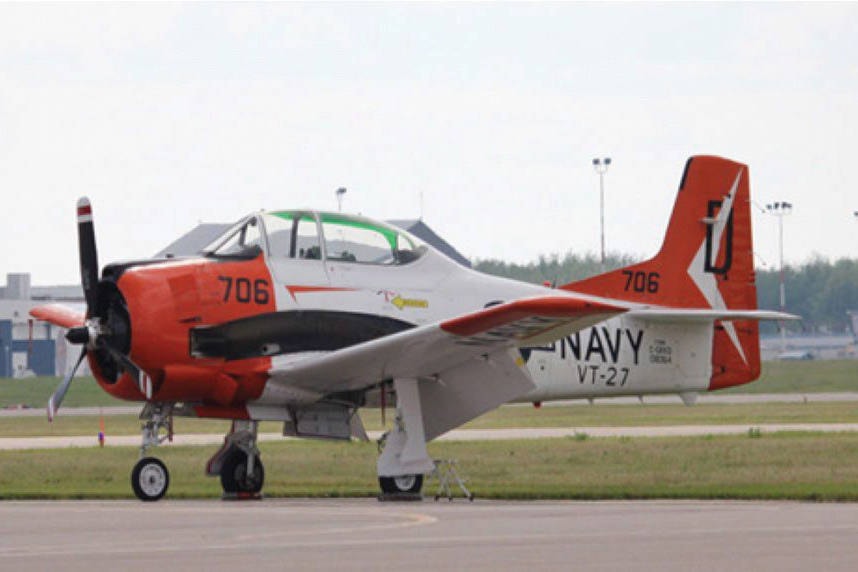EDMONTON — No one will ever know what caused the fatal crash of a private single-engine vintage plane in front of horrified spectators at an air show in Alberta.
The Transportation Safety Board of Canada says weather was not a factor and a review of the wreckage determined that the engine and flight controls were operating normally on the T-28B Trojan aircraft.
Pilot Bruce Evans of Calgary was performing acrobatic manoeuvres at the Cold Lake Air Show in July 2016 when something went wrong.
The plane hit the ground at high velocity in a near-vertical position.
No air show personnel or spectators were injured.
TSB investigator Fred Burow says the cause of the crash couldn’t be determined.
“Being an older aircraft, it doesn’t have any monitoring systems on board … and with the pilot having tragically died, we have no way of knowing what occurred in the cockpit, so we have to go with the evidence that we could find,” Burow said Friday.
A TSB report said Evans appeared to have modified the order of his manoeuvres about halfway through his performance, but added that is not unusual for an aerobatic performer.
“The pilot flew from show right to left at about 500 feet above ground level, within the defined airspace for the routine, then entered a roll just before show centre,” said the report.
“As the aircraft reached the inverted position, the roll stopped and the nose began to pitch toward the ground … the aircraft continued toward the ground in an arc until its collision with terrain.”
The report said Evans, who was 59, had performed the routine without incident the previous day.
Weather observations shortly after the crash reported light winds and a few clouds at higher elevations.
Although it was the pilot’s first show of the season, he had participated in several events in 2015 without any problems, the report said.
Evans had years of experience. The TSB said he earned a private pilot’s licence in 1993, a commercial licence in 1995 and an airline transport licence in 2015. He also had a valid medical certificate.
He had accumulated just over 4,043 flying hours. About 460 of those were on the T-28B Trojan.
“We did look into (all) the aspects: the aircraft, the pilot, the approval of the pilot, the approval of the air show … along with the evidence of the medical examiner and Transport Canada,” said Burow.
“In some cases it’s not always possible to pinpoint an exact cause.”
Evans grew up in a Canadian Air Force family. His biography on the Cold Lake Air Show’s website at the time said his father was an aircraft maintenance engineer.
It also said Evans ran his own aerial geophysical survey company, Firefly Airborne Surveys, which combined his training as a professional geologist and passion for aviation.
He purchased the Trojan in 2007. It was manufactured in 1954 and served in the U.S. Navy.
